
Sea turtles key part of Tortugas wildlife
DRY TORTUGAS, Fla. – It was 1513 when Ponce de Leon named the small collection of sand and coral islands today known as Dry Tortugas National Park, “Las Tortugas,” Spanish for “The Turtles.” This came about because of the frequent sightings of sea turtles around the islands.
Sea turtles season is listed from May 1 to Oct. 31 in Florida, but according to Kayla Nimmo, Biological Sciences technician of the Dry Tortugas National Park, nests have sometimes happened outside of this time period.
| At right, the view of the ocean from the loading dock (Photo by Emma Reyes). Below, the view of Loggerhead Key (Photo courtesy by National Park Service). | 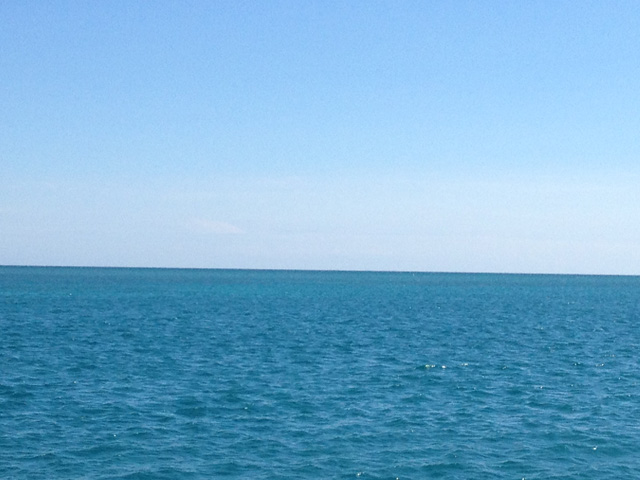 |
Nimmo monitors the sea turtles during nesting season and marks any new nests as she walks around the islands. She monitors the nests for hatching and, after three or more days, that the nests hatch and she records the contents to determine the nesting fate.
Biologists have been monitoring sea turtles nesting activity within the park’s boundaries since 1980. Due to the high activity of nesting in the Dry Tortugas National Park, which is the location for nesting in the Florida Keys.
There are three species of sea turtles that can be spotted between Key West and the Dry Tortugas National Park: the loggerhead, hawksbill and the green turtles. However, there are other species that have been seen around the park.
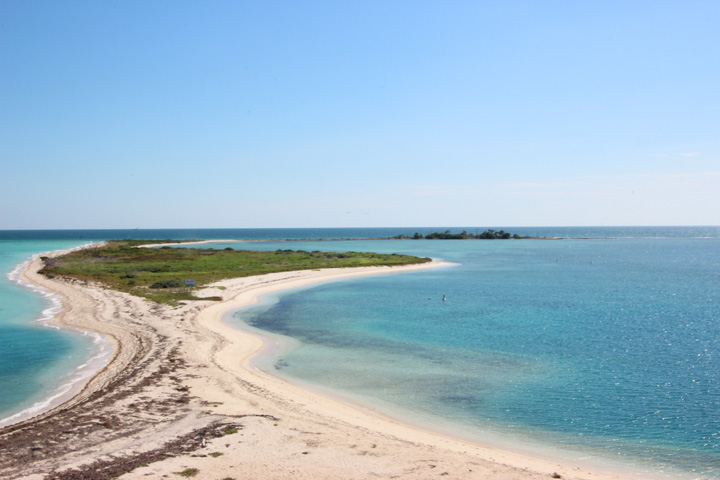 “We get occasional reports from the seaplane of leatherbacks in and near the park. Kemp’s Ridleys have also been seen here,” said Nimmo in an e-mail.
“We get occasional reports from the seaplane of leatherbacks in and near the park. Kemp’s Ridleys have also been seen here,” said Nimmo in an e-mail.
Sea turtles are the largest quantity of wildlife in the islands with about 250 nests that produce 15,000 hatchlings each summer.
The highest numbers of nesting of sea turtles in the park come from the species of loggerheads and greens.
“On average, they are about the same,” said Nimmo.
There is no actual cause as to why the sea turtles prefer a location like the Tortugas, but Nimmo believes that it’s because the sea turtles need sandy beaches.
“I cannot state this for certain, but I suspect it has to do with the fact that sea turtles require sandy beaches in which to nest and return near their natal beaches to nest. Thus, areas that have historically had little sand or high rates of exploitation have reduced nesting, whereas pristine sandy areas have reduced impacts.”
Nimmo added that certain areas of Florida, such as the Canaveral region located in Central East Coast, have higher densities of sea turtle nesting than at the Dry Tortugas.
In 1821, mariners in Loggerhead Key were attracted to the sea turtles for food, but discovered that the Tortugas was a dangerous place because of the more than 250 shipwrecks that have been reported in the waters.
| Click on the video at the right to view an audio slideshow about Dry Tortugas sea turtles narrated by writer Emma Reyes |
There are five species in the Tortugas region that are listed to be either threatened or endangered: the loggerhead, green, hawksbill, Kemp’s ridley and leatherback.
The U.S. Geological Survey is conducting a turtle capturing, tagging and tracking project to determine survival, growth rates, diet of juvenile green turtles, residence times in the park, core use areas for the three species of loggerhead, green and hawksbill and definitive links to other nesting grounds.
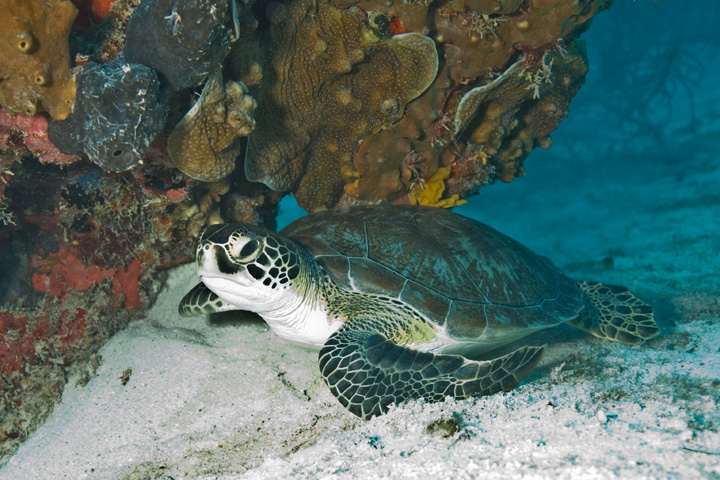 |
At left, a green turtle (Photos courtesy of the National Park Service). Next, the park entrance at Fort Jefferson. Last, a look at some of the underwater color in the park. |
The turtles are captured by stopping reproductive females on nesting beaches and catching turtles in the water using methods such as rodeo, hand-capture and dip-netting. When each of the turtles is caught, it is tagged, measured and sampled for genetics, isotopes and diet.
The methods used to determine daily location and movement patterns for the tagged turtles are satellite and acoustic telemetry techniques. These techniques are used to calculate home ranges, core use areas and to statistically review the extent of overlap of these areas with the Dry Tortugas Research Natural Area.
The Dry Tortugas park website has a link to the website where this tracking is available. The website has a long list of the turtles and their individual information. Users can subscribe to receive daily updates of the project. For more information on this, visit http://www.seaturtle.org/tracking/?project_id=402.
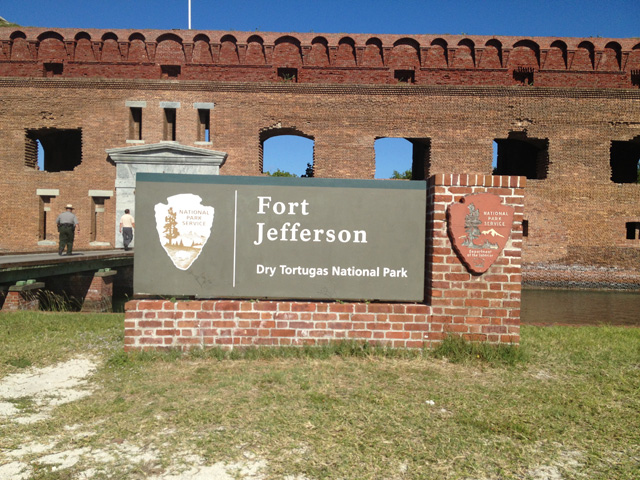 Although Ponce de Leon named the islands as “Las Tortugas” because of the frequent sightings of sea turtles, the Dry Tortugas as they are known today came about because there is not a natural source of water in the island.
Although Ponce de Leon named the islands as “Las Tortugas” because of the frequent sightings of sea turtles, the Dry Tortugas as they are known today came about because there is not a natural source of water in the island.
Fort engineers designed a system to collect rainwater in the cisterns under the gunrooms at Fort Jefferson. There are 109 cisterns and they hold 1.5 million gallons of water.
Rebecca D’Alessil, the Tortugas’s ferry tour guide, said people who lived in the Fort got very sick because of the unhealthy conditions of the stored water.
“Almost everybody was going to the doctor for dysentery, which is caused by drinking contaminated water, dehydration, bad food, poor nutrition – that sort of thing,” said Rebecca.
While at this time of year sea turtles are hardly seen, Diane Wheelock from Michigan, who went snorkeling with her husband, Bob Wheelock, enjoyed the underwater view.
“I loved the colors of the water and the fish,” Diane said. “It was very pleasant. There were some nice, beautiful fish.”
If You Go
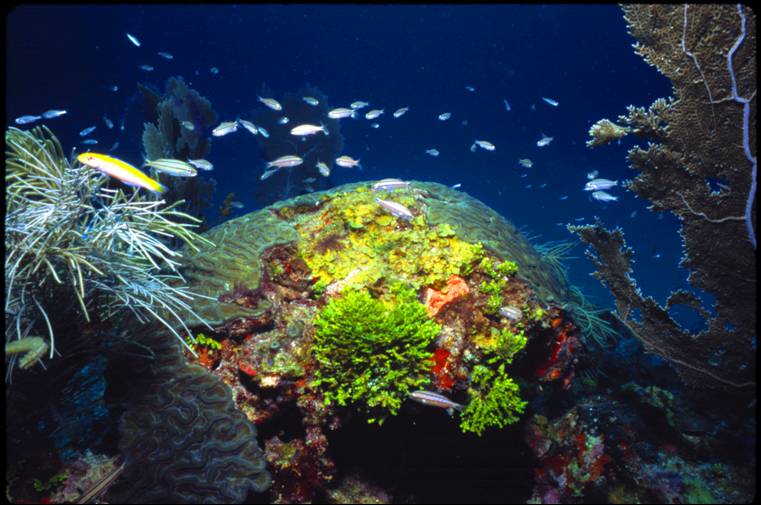 The Dry Tortugas National Park is located 70 miles west of Key West and access is only by private boats, charter boats or seaplane. There is public transportation available, which is called the Yankee Freedom II.
The Dry Tortugas National Park is located 70 miles west of Key West and access is only by private boats, charter boats or seaplane. There is public transportation available, which is called the Yankee Freedom II.- Yankee Freedom II departs from Key West and the voyage takes about 2 hours and 10 minutes to get to the park. The ferry offers continental breakfast with fresh fruit, freshly baked bagels, hot and cold cereal, boiled eggs, cheese, yogurt, juice and coffee. The ferry also offers complimentary lunch buffet, which includes fresh deli meats, cheeses peanut butter and jelly for the kids, a variety types of salads, fresh fruit, chips, cookies and soft drinks. The fee for the entrance of the park is $5, but for more information on rates and travel information visit, http://www.yankeefreedom.com
- When in the park explore the historic Fort Jefferson, snorkel the marine resources, bird watching or just sitting and enjoying ocean views. The Yankee Freedom II provides tours and are about 40 minutes starting at 11 a.m.
- Experience camping and for a detailed information guide visit, http://www.nps.gov/drto/planyourvisit/camping.htm

Comments are Closed